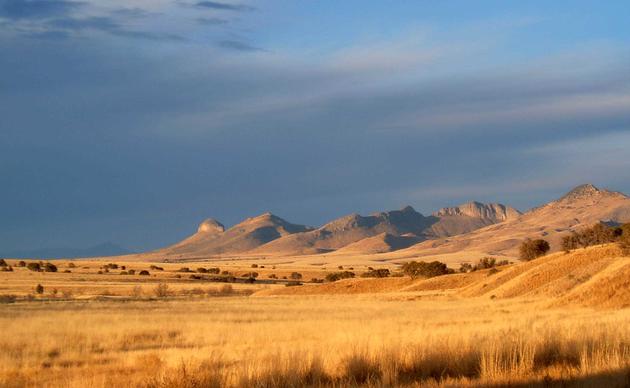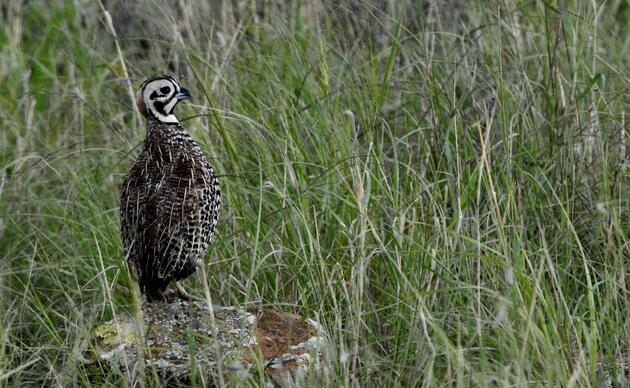Invasive Grasses
Although native vegetation dominates much of the AWRR, the rapid spread of non-native grasses threatens its ecological integrity and mission. In an attempt to reclaim the landscape from the devastating impacts of overgrazing brought on by the colonization of the region in the late 19th and early 20th centuries, Boer and Lehmann lovegrasses (Eragrostis curvula and E. lehmanianna) were introduced in the 1930s to increase grass cover and forage for livestock. The effort was successful and while there were some positive outcomes of the introductions, including a reduction in erosion, both species have become incredibly problematic invasive species. Lehmann lovegrass is the more ubiquitous of the two with near monocultures found from California to Texas, and while Boer lovegrass is slower to establish itself in new areas and has remained a more local problem, it compared to Lehmann lovegrass has an incredible ability to outcompete native species. Both species provide lower quality forage compared to native vegetation, and the areas they dominate show lower plant and wildlife richness and diversity when compared to native-dominated grasslands.
In response to this growing threat, AWRR staff began in the late 1990’s experimenting with methods to protect and rehabilitate native grasslands. Methods explored included fire, mowing, physical removal, alteration of soil carbon-nitrogen ratios, and grazing by domestic livestock, but only chemical treatment proved effective. In 2004, AWRR staff began working to employ this treatment method in the area between AWRR’s Headquarters and Research complexes, resulting in a mostly native control patch that now spans nearly 350 acres. Alongside this effort, AWRR staff in 2003 and 2004 established 18 vegetation transects across the AWRR to monitor ongoing changes in untreated areas and to assess the effectiveness of treatment within the treated area. Between 2016 and 2018, treatment was successful in reducing Lehman’s Lovegrass frequency in treated transects from 70% to 10%, but recolonization occurs quickly, making annual treatment necessary.
This effort on the Appleton-Whittell Research Ranch shows that chemical treatment can be an effective toolwith which to combat Lehman Lovegrass invasion, but with several caveats. For treatment to be successful over the long term, a commitment to consistent, annual treatment is necessary. This requires that practitioners carefully consider their capacity within the limited annual window during which chemical treatment is effective and responsible before deciding upon the scope and scale of their effort. This also means that chemical treatment is likely not a useful tool at the landscape level. Despite this, and since Lehmann Lovegrass has shown itself to be capable of creating near monocultures at the expense of native species, we advise that projects similar to this, projects where manageably sized islands of native species are established and maintained, are replicated to maintain living seed banks that may be used in the restoration of other impacted areas.
Want to learn more about our efforts to combat the spread of invasive lovegrasses? Read our 2024 annual report here (thank you to the Arizona Department of Forestry and Fire Management for funding this effort!).
Invasive Aquatic Species
The Research Ranch may look dry, but it's dotted with natural springs and artificial wetlands and crosscut by several intermittent drainages. While these resources support priority wildlife like Desert Pupfish and Chiricahua Leopard Frogs, they also harbor non-native aquatic species including American Bullfrogs, Green Sunfish, and Northern Crayfish. These animals are important components of their home ecosystems, but in Arizona they are carriers predators, competators, and disease vectors that put our native species at risk. In partnership with the Arizona Game and Fish Department and Bureau of Land Management, we stay vigilant in our effort to eliminate these invasive species and maintain native aquatic ecosystems on the Research Ranch.
Connect with the Research Ranch
AWRR 2024 Annual Report
Do you ever wonder what keeps us busy on the Research Ranch? Dive in to learn more!
Donate to the AWRR
Donate today and help us continue our work furthering conservation science, engaging people with birds and their habitats, and improving habitat here on the AWRR. Every dollar counts!






